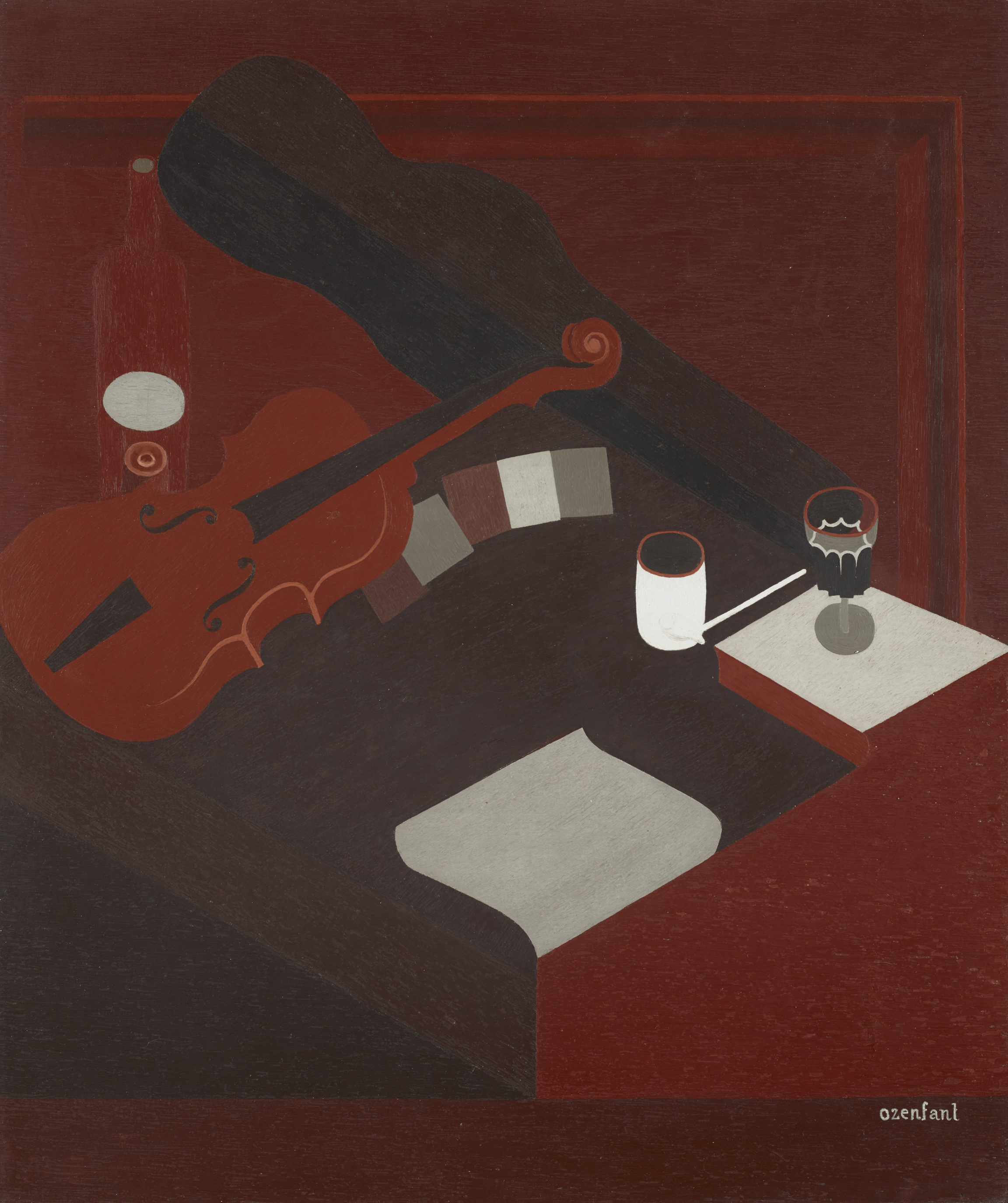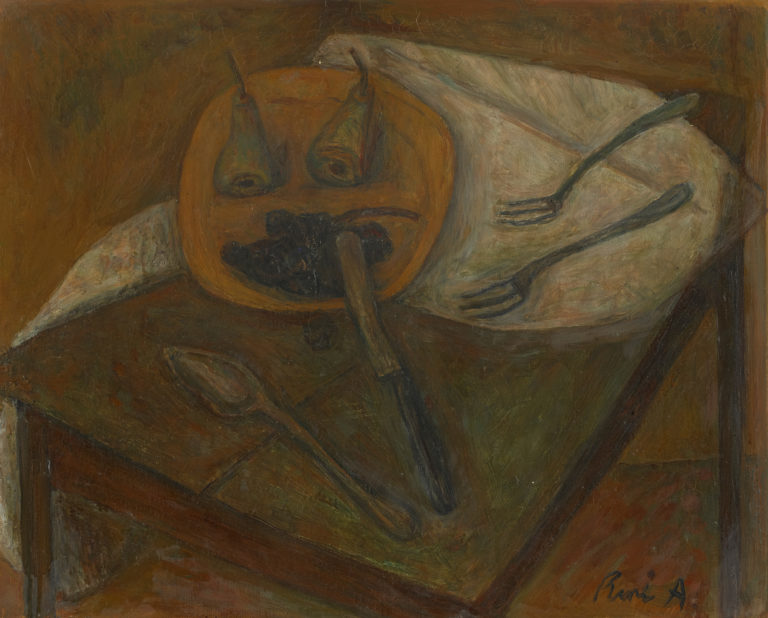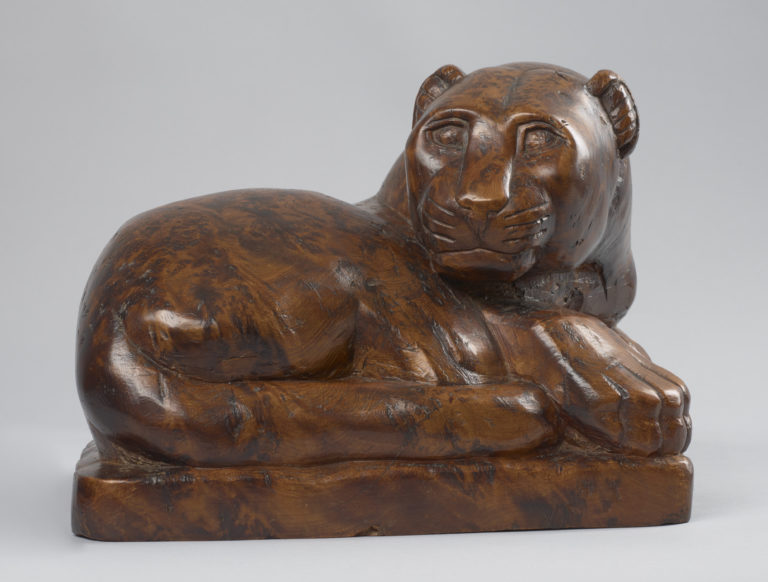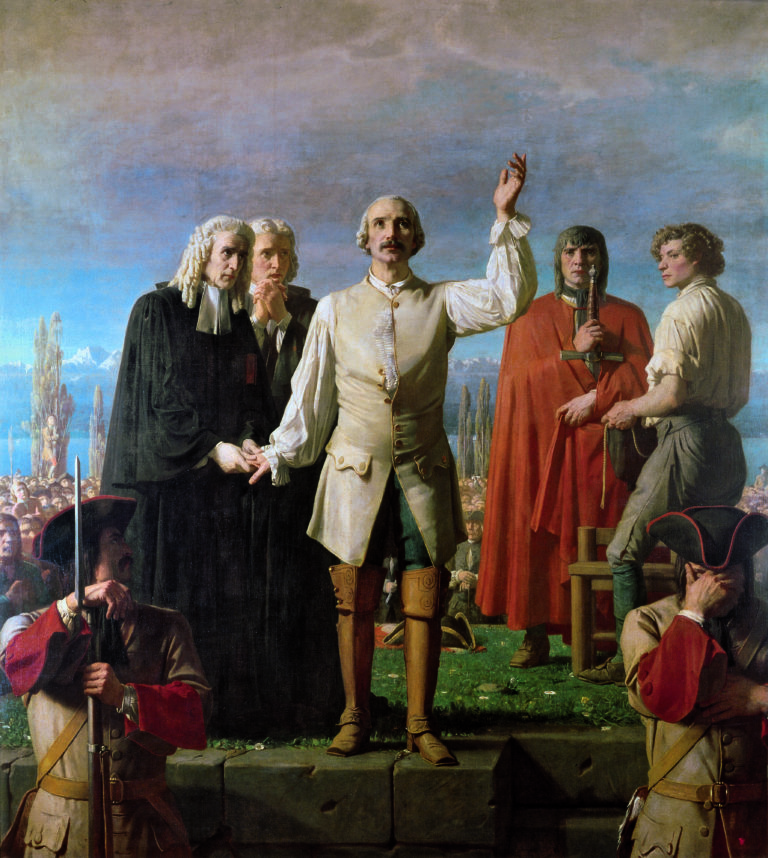Bibliography
Pierre Guénégan, Amédée Ozenfant, 1886-1966. Catalogue raisonné, St Alban, Lanwell & Leeds Ltd, 2012: n. 1929/006.
Françoise Ducros, Ozenfant, Paris, Cercle d’Art, 2002.
Amédée Ozenfant, exh. cat. Saint-Quentin, Musée Antoine Lecuyer, Besançon, Musée des Beaux-Arts, Mâcon, Musée des Ursulines, 1985.




In the aftermath of the First World War, Amédée Ozenfant and Charles-Édouard Jeanneret (Le Corbusier) co-signed Après le cubisme (After Cubism) [1918], a purist manifesto. In it, they argued for the exclusion of all disorder, be it in the dimension of time, as in impressionism and futurism, or in that of the imaginary, with the wildness of dada, or again in the decorative excesses seen in the epigones of cubism. Their new language would be based on industrial civilisation: paintings would now follow the ‘plans of prototype objects that have attained a high degree of invariability’.
In Le violon rouge, a half-size copy of a work from 1918–19, Ozenfant alludes to cubism: instead of an industrially produced object, the artist reintroduced an artisanal object, a violin, which was also a popular motif with Georges Braque and Pablo Picasso in the 1910s.
If purism advocated the frontal representation of objects in an almost abstract space, here the artist tempered his intransigence somewhat, choosing a high viewpoint, and basing his composition on oblique lines that generate a slight impression of depth. Arranged around the four sides of a lozenge are the objects in his still life: a table, a violin with its case, a bottle, playing cards, a fluted stem glass, a pipe, a book and a sheet of paper. Here it is not cast shadows that underscore the spatial relations between the objects, but the right-angled intersection of their contours. With no clear grounding, they appear to float free of gravity. The horizontal band along the bottom of the painting, like a modern predella holding the signature, and the panel from a piece of woodwork frame stabilise the ensemble. The visual rhythms between the sheet of paper, the curve of the violin and its F-holes, between the bottom of the bottle and the scrolls of the instrument enliven this painting contained within the ‘main scale’ or reds, earth, white and black defined by the purists.